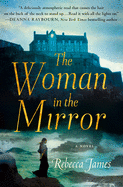
| Publisher: | Minotaur Books | |
| Genre: | Mystery & Detective, Suspense, Gothic, Thrillers, Fiction, Historical | |
| ISBN: | 9781250230058 | |
| Pub Date: | March 2020 | |
| Price: | $26.99 |
| Mystery & Thriller |
by Rebecca James
Rebecca James (Beautiful Malice; Sweet Damage) delivers a hauntingly atmospheric tale in The Woman in the Mirror. Forbidding Winterbourne Hall, located at the very edge of Cornwall, has harbored dark secrets for more than two centuries. New Yorker Rachel Wright has never heard of it, and is astonished to learn that she is heir to the decrepit estate.
In 1947, Alice Miller accepted a post as governess to the de Grey family of Winterbourne. Her charges, twins Constance and Edmund, appear to be angelic, but they've had a hard life. Their mother died when they were toddlers, and their father, Captain Jonathan de Grey, was badly wounded in the war and has returned an aloof, stern figure, apparently still mourning the loss of his wife and the damage to his leg. However, Alice finds herself drawn to the enigmatic Captain de Grey, just as she becomes unnerved by the increasingly strange behavior of the twins.
In the present day, Rachel travels to Cornwall to seek out how she is connected to the de Grey family, and finds both a tentative new love and some disquieting revelations about the history of Winterbourne, which are closely entwined with her own past.
Perfectly gothic, The Woman in the Mirror is a creepily enthralling tale. Readers are sure to love the disturbing world of Winterbourne and be shocked to discover exactly how Alice and Rachel's stories will end. Fans of historical mysteries or literary ghost stories will love what Rebecca James has created. --Jessica Howard, bookseller at Bookmans, Tucson, Ariz.
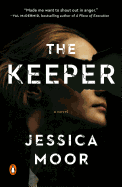
| Publisher: | Penguin Books | |
| Genre: | Police Procedural, Mystery & Detective, Crime, Suspense, Thrillers, Fiction | |
| ISBN: | 9780143134527 | |
| Pub Date: | March 2020 | |
| Price: | $16 |
| Mystery & Thriller |
by Jessica Moor
The dual timelines of Jessica Moor's enigmatic debut, The Keeper, concern Katie Straw as victim and protagonist. In "Then," Katie is dealing with her mother's terminal illness and a new relationship. "Now," Katie is pulled from the water under a popular suicide bridge. Moor covers the investigation of Katie's death while flashing back to her increasingly controlling lover. The attitudes of the officers involved complicate matters, as do the certainties of the women at the domestic violence shelter where Katie worked that she would not have killed herself.
DS Daniel Whitworth is an old-school detective close to retirement. At times sentimental and insightful, Whitworth's attitudes are mostly infuriating. His trainee, DC Brookes, is a tad further evolved, though they still muse about hackle-raising questions (is a woman in danger if her husband didn't actually hit her?). Moor provides a view into the many facets of domestic abuse through the sheltered women, all different yet none novel. Katie's "Then" story is, in many ways, their "before" version, skillfully showing how any woman might be slowly eclipsed by strategic manipulation.
Fascinatingly, the pace of the investigation renders it almost a backdrop to the consideration of ideas about women. Whitworth's internal thoughts (on "proper rape," crying men, naming his daughter Jenny because "Jennys" are nurses and teachers, not prostitutes) are consistently trying, his character a funnel for a world of misguided ideas. Clever twists bring Katie's case to an end while Moor's amplification of misogyny and abuse spirals on into the future. --Lauren O'Brien of Malcolm Avenue Review

| Publisher: | Del Rey | |
| Genre: | Space Opera, Fiction, Action & Adventure, Science Fiction | |
| ISBN: | 9780451499813 | |
| Pub Date: | March 2020 | |
| Price: | $27 |
| Starred | Science Fiction & Fantasy |
by Zack Jordan
The only surviving member of the human species, Sarya embarks on a dangerous quest for answers and justice in the playfully mind-bending space adventure The Last Human.
Sarya the Daughter is a human adopted by Shenya the Widow, a murderous arachnoid hunter. Registered as a low-tier citizen, Sarya can tell none of the 1.4 million intelligent species in the Network her race or she'll be killed. When a group mind named Observer claims to know Sarya's origins, Sarya sees this as "a choice between mundanity and adventure, between her home and her people." That choice becomes imperative when Shenya sacrifices herself to save Sarya from a bounty hunter. On the run with a conveniently disobedient autonomous pressure suit, a thieving android on his 60th life, a terrifying six-limbed beast and a wicked smart furball, Sarya seeks Observer's knowledge. As she learns about the eradication of the human species, she finds that Observer is not the only intelligence with a stake in Sarya's future--and the potential return of humanity.
With multiple godlike minds appealing to Sarya, she wonders whether it's truly possible to act. Her dilemma generates questions about the illusion of choice versus free will. Moreover, Zack Jordan's tale grapples with what purpose means for a "speck of dust in a galaxy that is also a speck of dust." His deft worldbuilding incorporates clever tools (sentient tech; translation devices that tag speakers' emotions), proverbs ("the Network tends toward order"), species-specific eccentricities and satiric "Network Orientation" missives. Steeped in existentialism, with wacky characters, vicious strategizing and cynical banter, The Last Human by Zack Jordan is a smart and imaginative sci-fi debut that encourages good-natured philosophizing. --Samantha Zaboski, freelance editor and reviewer

| Publisher: | Saga Press | |
| Genre: | Space Opera, Cyberpunk, Hard Science Fiction, Fiction, Science Fiction | |
| ISBN: | 9781534422087 | |
| Pub Date: | April 2020 | |
| Price: | $28.99 |
| Science Fiction & Fantasy |
by Hao Jingfang, trans. by Ken Liu
Hugo Award-winner Hao Jingfang's Vagabonds is a science fiction epic that doubles as a work of philosophy--a novel filled with big ideas about art, competing cultures and so much more. Translated by Ken Liu (The Hidden Girl), Hao's novel takes place at the beginning of the 23rd century, on a colonized Mars that broke away from Earth many years earlier, after a destructive war.
In an attempt to thaw relations between Mars and Earth, a delegation of young Martians was sent to live on Earth for five years. Vagabonds begins with their return to Mars, many of them unmoored by their experiences in a very different culture. Luoying returns unsure of her place in either world, disturbed by assertions on Earth that her grandfather, the consul of Mars, is a dictator. Meanwhile, Eko, a documentarian from Earth, finds Mars a utopia of artistic expression, unconstrained by the demands of capitalism. As Eko attempts to follow the footsteps of his old teacher, and Luoying learns more about her deceased parents, the author unfolds revelations and complicates each of their perceptions of Mars.
Vagabonds is sometimes reminiscent of old-school sci-fi. Hao thankfully avoids the all-too-common habit of making one character her obvious mouthpiece; instead, it's often unclear who is right and who is wrong. Even Luoying's grandfather, the alleged dictator, is treated sympathetically and given a fully coherent ideology. In Vagabonds, the conflict between Earth and Mars is no more important than the conflict between the novel's characters as they struggle to chart a course for their future. --Hank Stephenson, manuscript reader, the Sun magazine
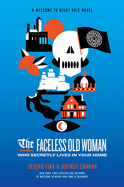
| Publisher: | Harper Perennial | |
| Genre: | Horror, Humorous, Fantasy, General, Fiction, Historical, Science Fiction | |
| ISBN: | 9780062889003 | |
| Pub Date: | March 2020 | |
| Price: | $21.99 |
| Science Fiction & Fantasy |
by Joseph Fink, Jeffrey Cranor
Listeners of the eerie podcast Welcome to Night Vale know that in the town of Night Vale, there is a faceless old woman who lives in everybody's home. She might light a refrigerator on fire if it upsets her, or she might want the Wi-Fi password, but never has she revealed how she came to live there or what happened to her face.
Her story stretches back to the 18th century in a Europe that features several additional countries. An idyllic childhood ends in tragedy, setting her on a lifelong quest for revenge against a shadowy criminal organization. Adventure and humor blend with a fablelike tone reminiscent of The Princess Bride by William Goldman. Woven throughout the story are chapters set in modern Night Vale, in which she addresses a resident named Craig. She treats him sometimes like a roommate, sometimes like a son in whose life she meddles and sometimes as if she's the ghost who haunts his house. By the end, her particular interest in Craig will become chillingly clear.
This third Welcome to Night Vale novel from Joseph Fink and Jeffrey Cranor (Welcome to Night Vale) requires no prior knowledge of the previous books or the podcast, although readers versed in the larger universe will be pleased to get glimpses of the history of other familiar characters and mysterious organizations that populate that world. Part Ruritanian romance, part horror story, The Faceless Old Woman Who Secretly Lives in Your Home will enchant fans and newcomers alike. --Kristen Allen-Vogel, information services librarian at Dayton Metro Library

| Publisher: | Harlequin | |
| Genre: | Family Life, Small Town & Rural, Romance, Contemporary, Southern, Fiction, Siblings | |
| ISBN: | 9781335013286 | |
| Pub Date: | March 2020 | |
| Price: | $7.99 |
| Romance |
by Michelle Major
Michelle Major (Fortune's Fresh Start) begins a warmhearted series with The Magnolia Sisters. Avery Keller, 30 years old and living in San Francisco, has her life disrupted when she loses her high-powered job in risk analysis and learns the man she loves is already married, with a family. Avery receives another unexpected jolt when she gets word that her birth father, a man whom Avery always believed knew nothing about her existence, has died and left her an inheritance. In order to claim it, Avery sets off for Magnolia, N.C., where she learns about her father, Niall Reed--a once prominent artist and serial philanderer--whose lucrative paintings, in his heyday, captured enough acclaim for him to buy up a lot of property in town.
Avery's revelations don't end there. She learns she has two half-sisters--Magnolia natives who didn't know they shared the same father--who are also beneficiaries of Niall's patrimony. Wise-cracking 29-year-old animal-rescuer Meredith is drawn to fitted T-shirts, cargo pants and boots, while 28-year-old artistic Carrie--the only one of the sisters who was raised by their father--looks and acts like a "perfect Southern belle." The three vastly different women grapple with their new identities, each other and how best to handle Niall's fortune without disrupting the small-town dynamic. Along the way, Avery falls for a handsome, divorced firefighter embroiled in a messy custody battle for his precocious daughter.
A large cast of well-drawn characters and a host of intriguing story threads enlarge the hopeful, heartfelt charm of Major's engrossing new romance series. --Kathleen Gerard, blogger at Reading Between the Lines
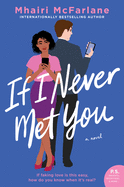
| Publisher: | Morrow | |
| Genre: | Women, Romantic Comedy, Friendship, Romance, Coming of Age, Fiction | |
| ISBN: | 9780062958501 | |
| Pub Date: | March 2020 | |
| Price: | $15.99 |
| Romance |
by Mhairi McFarlane
In this funny, well-developed contemporary romance, Scottish-born Mhairi McFarlane (Don't You Forget About Me) takes the adage "Fake it 'til you make it" into the dating scene.
When biracial British lawyer Laurie Watkinson's domestic partner of 11 years tells her he doesn't want children and leaves her for another woman, she's blindsided. At 36, she worries she won't ever have a family now, and their breakup becomes hot gossip at the firm where they both work. The last straw comes when his new girlfriend turns up pregnant. Unwilling to play the scorned woman, Laurie strikes up a deal with unlikely ally Jamie Carter, a gorgeous and ambitious coworker five years her junior. Jamie wants to move up at their firm, but the traditionally minded bosses have told the monogamy-averse playboy he lacks stability. If he and Laurie appear to fall in love, he'll gain a veneer of respectability. Capturing the heart of an infamously untamable bachelor will up Laurie's desirability factor. As their fictional relationship begins to reveal Jamie's hidden depths, Laurie realizes the hardest part of this ruse will be pretending not to fall for her fake boyfriend.
McFarlane gives her heroine realistic hurdles, including workplace sexism and finding herself after a decade in a stifling relationship, all balanced with the author's trademark dry humor. Watching Jamie and Laurie step up and support each other time and again is soul-quenching, and readers wanting a romance with emotional heft need look no further. --Jaclyn Fulwood, blogger at Infinite Reads

| Publisher: | Doubleday | |
| Genre: | Biography & Autobiography, Women's Health, Personal Memoirs, Health & Fitness, General, Immune & Autoimmune, Diseases | |
| ISBN: | 9780385534079 | |
| Pub Date: | March 2020 | |
| Price: | $27.95 |
| Biography & Memoir |
by Sarah Ramey
The Lady's Handbook for Her Mysterious Illness by Sarah Ramey is a riveting account of one woman's chronic illness and the failure of modern medicine to diagnose and treat her.
Ramey is a writer and musician known by her stage name, Wolf Larsen. Her struggle with severe pelvic pain, gut and colon dysfunction and persistent fatigue began more than a decade ago with a urinary tract infection while she was in college. A dangerous and unwarranted procedure performed by one of Washington, D.C.'s preeminent urologists sent her into septic shock and near death. Traumatized, her body was weakened by the industrial-strength drugs used as treatment.
As the daughter of physicians, the author was raised with an unquestioning belief in the healing power of medicine. When told by specialists that her pain symptoms were signs of psychological problems, she dutifully took the antidepressants they prescribed. Meanwhile, her physical condition worsened.
With a light touch, despite the serious subject matter, The Lady's Handbook offers example after stunning example of doctors (with aliases such as Dr. Bowels) unwilling to devote any effort to understanding and treating complex, under-researched "feminine" conditions such as Ramey's. After years of trying alternative treatments with no long-term improvement, the author embraced the functional medicine movement, with a focus on emotional wellbeing, sleep, gut and intestinal health, and the immune system for optimal healing and wellbeing.
Ramey's remarkable journey toward improved health and her research into the benefits of functional medicine offer valuable hope to others battling complex health problems for which conventional medicine offers no satisfactory answers. --Shahina Piyarali, writer and reviewer
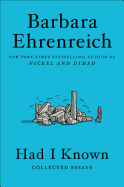
| Publisher: | Twelve | |
| Genre: | Social Classes & Economic Disparity, Popular Culture, Commentary & Opinion, Literary Collections, Social Science, Essays, Political Science | |
| ISBN: | 9781455543670 | |
| Pub Date: | March 2020 | |
| Price: | $28 |
| Starred | Essays & Criticism |
by Barbara Ehrenreich
In Had I Known, Barbara Ehrenreich (Living with a Wild God; Natural Causes) explores social issues in 40 essays published from 1999 through 2019. Even her sharp, dry wit can't soften these timely and hair-raising topics, and the collection is a reminder of what hasn't been addressed in the United States.
Ehrenreich, whose many books focus on undervalued citizens and underexposed social truths, opens Had I Known with sobering news: fewer investigative journalists like her are working today. "Squeezed to generate more profit for billionaire newspaper owners," reporters have been laid off, replaced by freelancers. (She has helped fund the Economic Hardship Reporting Project to assist underrepresented struggling journalists.)
Arguably the best known of Ehrenreich's books is Nickel and Dimed, reported when, in 1998, she went "undercover" in the low-wage workforce, concluding that as bad as those poverty-level jobs were, conditions were bound to worsen (with the 1999 economic forecast). By 2007 things were no better, and "Going to Extremes: CEOs vs. Slaves" cites increasing polarization, not only in bottom-tier jobs but among professions, such as professors' incomes compared to those of adjuncts.
In her prescient 2006 piece "Are Illegal Immigrants the Problem?" she advocated that all low-wage workers join immigrants in banding together for better wages and conditions. Multiple essays note the criminalization of poverty and homelessness, including cities' cracking down on distributing food to the poor.
Ehrenreich takes on health (like Nickel and Dimed, she wrote 2001's "Welcome to Cancerland" from "inside" as a breast cancer patient, decrying the emphasis on "pink ribbons" over environmental carcinogens and patriarchal medicine), sexual harassment, "mass market mindfulness" and more, in essays as provocative now as when they were first written. --Cheryl Krocker McKeon, freelance reviewer
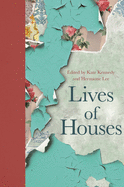
| Publisher: | Princeton University Press | |
| Genre: | Biography & Autobiography, Architecture, Buildings, Residential, Social History, General, Literary Collections, History, Essays | |
| ISBN: | 9780691193663 | |
| Pub Date: | March 2020 | |
| Price: | $24.95 |
| Essays & Criticism |
by Kate Kennedy and Hermione Lee, editors
Houses are ubiquitous in life-writing, and in many other kinds of writing, notes editor Hermione Lee in her introduction to this thoughtful collection of essays. Houses, their lives and afterlives, what they mean to their owners and inhabitants, what it means to be un-housed and looking at houses from the outside in--these essays ask readers to reflect on their own lives by considering these structures more fully.
This collection follows a conference titled "The Lives of Houses," held at the Oxford Centre for Life-Writing in 2017. It is broadly arranged in seven sections, which makes it easy to read the 23 essays in order or skip around. Whether considering the lives and homes of artists and writers, houses that have left an impact on history, or how history is impressed upon these structures, the range of disciplines includes perspectives from writers, curators, poets, literary critics, historians, archeologists and others. Essayists include editor Hermione Lee, as well as notable names such as Julian Barnes, R.F. Foster and Jenny Uglow. Accessible, though with an obvious intellectual bent, Lives of Houses does not try to really answer the question of what houses mean to the people who live in them, but rather, calls readers to consider more broadly why these structures have such a hold--both physically and in how they frame the concept of home. --Michelle Anya Anjirbag, freelance reviewer
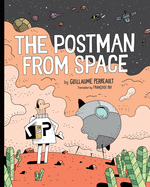
| Publisher: | Holiday House | |
| Genre: | Humorous Stories, Humorous, Alien Contact, Juvenile Fiction, Comics & Graphic Novels, Science Fiction | |
| ISBN: | 9780823445844 | |
| Pub Date: | April 2020 | |
| Price: | $12.99 |
| Starred | Children's & Young Adult |
by Guillaume Perreault, trans. by Françoise Bui
Drawn "with a deft hand that could convey the speed of hurdling space projectiles," Guillaume Perreault's The Postman from Space is the jocular story of Bob, a spacial postman who is really quite ordinary. Every morning he showers, puts on his uniform, travels the same way to work and enjoys his nice-and-easy schedule on his nice-and-easy delivery route. This morning, though, there has been a change and Bob is about to have a very unusual, not even remotely nice-and-easy day--instead of his standard "simple and orderly" route, Bob delivers to a giant during a very muddy rainstorm, an elderly woman who needs to clean up the mess in her asteroid belt and a planet occupied entirely by dogs. Hungry dogs.
Perreault (Sleep, Sheep!) takes everyday adult activities--gassing up the car, making coffee, going to work--and places them in an extraordinary context, giving readers a world that is surprising, unusual and very funny. The text, translated from the original French by Françoise Bui, directly conveys the mundanity of Bob's life while the illustrations show readers the silly: Bob showering in a glass cube, or taking orders from his mustachioed, one-eyed, tentacled boss. Perreault makes excellent use of blank space to keep his illustrations uncluttered, his panels drawn in a thin, uneven black line with many pages free of panels altogether. He makes the art all the more dynamic by visually differentiating Bob's new delivery stops with individual color palettes. The Postman from Space is an imaginative graphic novel perfect for both solo and shared reading experiences. --Siân Gaetano, children's and YA editor, Shelf Awareness
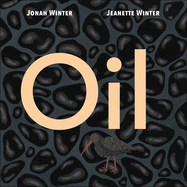
| Publisher: | Beach Lane Books | |
| Genre: | Environmental Science & Ecosystems, United States - State & Local, Environmental Conservation & Protection, Disasters, Transportation, Science & Nature, United States - 20th Century, History, Boats, Ships & Underwater Craft, Juvenile Nonfiction | |
| ISBN: | 9781534430778 | |
| Pub Date: | March 2020 | |
| Price: | $17.99 |
| Children's & Young Adult |
by Jonah Winter, illust. by Jeanette Winter
Three decades after the Exxon Valdez ran aground on March 24, 1989, in Alaska's Prince William Sound, author Jonah Winter (Thurgood) and his author/illustrator mother, Jeanette Winter (Malala/Iqbal), present the environmental catastrophe in a straightforward manner ideal for younger audiences. With a similar display of transparency that earned stars and plaudits for their collaborative The Secret Project, about the atomic bomb, Oil is another affecting early primer.
Jonah Winter introduces the oil extraction that gets "pumped by machines... all day long, all night long," and follows the 800-mile pipeline connecting the oil with waiting ships. Jeanette illustrates the pipeline's path, her palette initially dark and shadowed as bears and seals witness the invasive work, switching to full color "across what had been unspoiled land, home to Native people," then returning to muted darkness as the pipeline reaches the port's waiting ships. Embarking into the "clean, cold ocean water," the loaded Valdez goes "CLANG! CRACK!... And just like that, oil GUSHES out of holes," spreading across 11,000 square miles, proliferating carnage over "days, weeks, months." Jeanette Winter shrouds Jonah's words--already graphically accentuated with enlarged, bolded text--with ominous darkness. Thirty years pass, and sea otters and seabirds have returned, but "for Native people... their way of life still has not recovered."
In simple, stark prose, Jonah's candid words need no embellishments to underscore the magnitude of this manmade disaster. The minimal type on the page provides maximal space for Jeannette's sweeping, impassioned art. Despite Jonah's sober ending, younger readers just might be the antidote to the seeming bleakness: galvanized by the Winters, awareness is always the necessary first step toward action. --Terry Hong, Smithsonian BookDragon